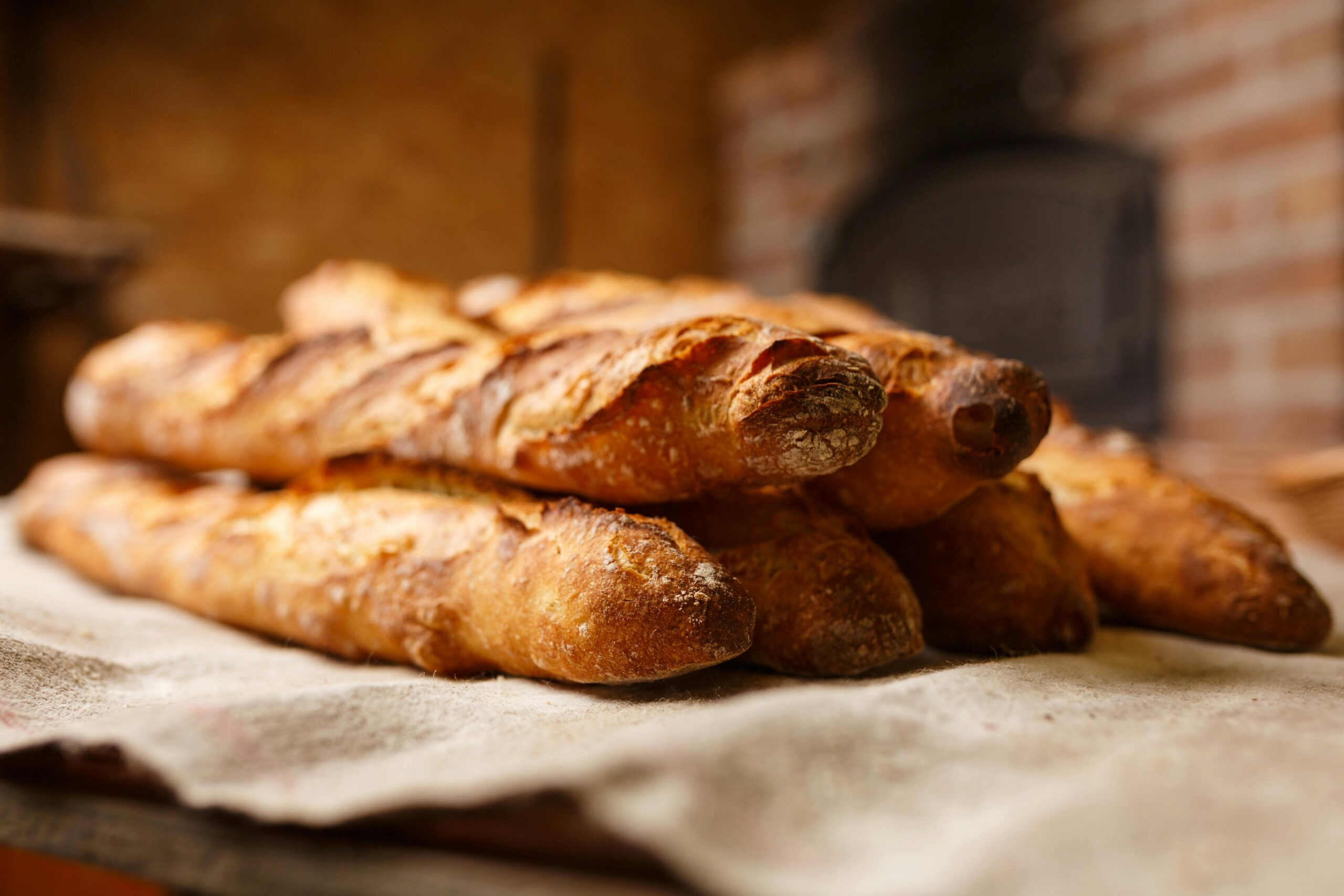Last updated on February 26th, 2025 at 09:53 pm
A captivating business description can set your bakery apart and attract more customers. This post will guide you through creating a perfect bakery business description. We’ll explore essential elements, present a perfect bakery business description example, and share tips to make your bakery stand out.
Whether you’re starting fresh or refreshing your brand, this guide ensures your bakery’s essence shines through in every word.
What Is a Bakery Business Description?
A bakery business description is a written narrative that outlines the key aspects of a bakery. It highlights the bakery’s offerings, such as bread, pastries, and cakes, and often includes details about the quality of ingredients, baking methods, and unique selling points.
The description also paints a picture of the bakery’s ambiance, customer experience, and role in the community. It serves as a tool to attract and inform customers, capturing the essence and appeal of the bakery.
Also Read: Trendy Barkery Business Name Ideas
Key Elements of a Bakery Business Description
Dive into the delicious details of a bakery business description. Each element plays a crucial role in painting a vivid picture of your unique bakery.
Let’s explore these key ingredients:
1. Engaging Introduction
Start with an engaging introduction. It should instantly capture the essence of your bakery. Mention the bakery’s name, its foundation story, or a unique aspect that makes it special. This is your chance to make a lasting first impression.
2. Location and Ambiance
Location plays a crucial role. Describe where your bakery sits. Is it a cozy corner in a bustling city or a serene spot in a quaint village?
Talk about the ambiance. Does your bakery offer a rustic, homey feel or a modern, chic environment?
The description should transport readers to your bakery’s doorstep.
3. Range of Offerings
Highlight what you serve. Detail your range of bread, pastries, cakes, and any specialty items. If you cater to specific dietary needs like gluten-free or vegan options, mention this.
It’s not just about listing items; it’s about making mouths water with descriptions.
5. Quality and Ingredients
Emphasize the quality of your products. Talk about the freshness of your ingredients, any local sourcing, and your commitment to flavor and health.
If you use traditional baking methods or have a unique approach to baking, this is the place to boast about it.
6. Unique Selling Points (USPs)
What sets your bakery apart? Maybe it’s your family recipes, your commitment to sustainability, or your innovative flavor combinations. Your USPs are your bakery’s signature, so highlight them prominently.
7. Customer Experience
Describe the experience customers can expect. From the moment they walk in, what smells, sights, and sounds will they encounter? How do your staff contribute to this experience? A great bakery isn’t just about great food; it’s about the overall experience.
8. Community and Engagement
If your bakery plays a role in the community, talk about it. Do you host events, support local causes, or offer baking classes? This shows you’re more than just a business; you’re a part of the community fabric.
9. Call to Action
End with a call to action. Invite readers to visit, try your specialties, or follow you on social media. This isn’t just a closing sentence; it’s an invitation to engage further with your bakery.
A bakery business description is more than a narrative; it’s a sensory journey. It should entice, inform, and invite. By focusing on these key elements, you can craft a description that portrays your bakery’s story and its soul.
Remember, the right words can be as tempting as the aroma of freshly baked bread.
Bakery Business Description Example
Twilight Bakery: A Haven of Homely Delights
Nestled in the heart of Greenwood, Twilight Bakery offers a charming retreat for pastry lovers. With its vintage decor and the aroma of freshly baked bread, it invites passersby into a world of rustic charm. Our bakery prides itself on handcrafted pastries and artisanal bread, made using locally sourced, organic ingredients. From our famous cinnamon swirls to our hearty sourdough loaves, each item tells a story of tradition and passion.
At Twilight Bakery, we believe in more than just baking. We believe in creating memories. Our cozy café area, with its mismatched chairs and warm, inviting atmosphere, is the perfect spot for a quiet afternoon. Whether you’re meeting friends over coffee or enjoying a quiet moment with a book, our bakery provides a comforting escape from the hustle and bustle.
Our commitment extends beyond delicious baked goods. We are a hub for the community, hosting weekly baking workshops and supporting local events. Our aim is not just to be a bakery, but a gathering place that nurtures warmth and togetherness.
Step into Twilight Bakery, where every bite is a taste of home and every visit feels like a warm embrace. Join us for a pastry, a smile, and a moment of bliss.
Analysis of Twilight Bakery Business Description Example
- Engaging Introduction: The description starts effectively by setting the scene – “Nestled in the heart of Greenwood”. It immediately introduces Twilight Bakery, creating a sense of location and warmth.
- Location and Ambiance: The bakery’s location in Greenwood and its vintage, rustic charm is well-highlighted. The description of the aroma of fresh bread effectively evokes a sensory experience, inviting the reader to imagine being there.
- Range of Offerings: The description mentions “handcrafted pastries and artisanal bread”, with specific examples like cinnamon swirls and sourdough loaves. This provides a clear idea of what the bakery offers, though it could detail more variety to fully showcase the range.
- Quality and Ingredients: The use of “locally sourced, organic ingredients” emphasizes quality and care in their baking process. It also appeals to health-conscious and environmentally aware customers.
- Unique Selling Points (USPs): The bakery’s focus on tradition and a homely atmosphere are its USPs. These are effectively communicated, making the bakery stand out as more than just a place to buy bread.
- Customer Experience: The description paints a vivid picture of the customer experience – a cozy café area, the warmth, and the inviting atmosphere. It suggests an ideal place for relaxation and socializing, enhancing the bakery’s appeal.
- Community and Engagement: Mentioning community involvement through “weekly baking workshops and supporting local events” showcases the bakery’s commitment to community engagement, portraying it as a socially responsible business.
- Call to Action: The closing invites the reader to visit for “a pastry, a smile, and a moment of bliss”. This is an effective call to action, as it extends a personal invitation and promises a pleasant experience.
Overall, Twilight Bakery’s business description effectively encompasses the key elements, creating an inviting and detailed picture of what the bakery offers, its ethos, and the experience it promises to its customers.
Tips for Writing Your Own Bakery Business Description
When crafting your bakery business description, follow these tips to make it as appealing and effective as possible:
Start With a Strong Hook
Your opening line is crucial. It’s the first taste customers get of your bakery, so make it memorable. Start with something unique about your bakery – maybe it’s your location, a special ingredient, or a family recipe passed down through generations.
This hook isn’t just an introduction; it’s a glimpse into the heart of your bakery, setting the stage for the story you’re about to tell.
Think of it as the aroma that draws customers in from the street – intriguing, inviting, and impossible to ignore.
Showcase Your Specialties
Your bakery’s specialties are its stars, so let them shine. Highlight what you’re famous for, whether it’s artisan bread, custom cakes, or vegan pastries.
Don’t just list them; describe them in a way that makes readers’ mouths water. Explain why they’re unique – is it an unusual ingredient, a secret technique, or a twist on a classic recipe?
These specialties aren’t just products; they’re the pride of your bakery, reflecting your passion and skill.
Use Sensory Language
Engage all the senses in your description. Describe the aroma of warm bread drifting through the air, the sound of a crusty loaf being sliced, the sight of fluffy pastries displayed in the window, the feel of a warm cup of coffee in your hands, and, most importantly, the taste of your delectable creations.
Sensory details bring your description to life, allowing readers to imagine being in your bakery and experiencing its delights first hand.
Tell Your Story
Every bakery has a story, and yours is no exception. Share how your bakery came to be – was it a lifelong dream, a family tradition, or a love of baking? This story adds a personal touch, helping customers feel connected to you and your bakery.
It’s not just about selling bread and cakes; it’s about sharing a piece of your world with every customer.
Focus on the Experience
Your bakery is more than a place to buy bread; it’s an experience. Describe the cozy ambiance, the friendly staff, the comfort of sitting with a fresh pastry and a hot drink. This isn’t just a transaction; it’s a moment of joy in your customers’ day.
Highlight any unique aspects, like your café space, special events, or even the music you play. Make it clear that visiting your bakery is not just shopping; it’s an escape, a small adventure, a treat.
Highlight Community Involvement
Show how your bakery contributes to the community. Do you use local ingredients, collaborate with nearby businesses, or participate in local events? Perhaps you offer baking classes, host book clubs, or support local charities.
This shows that you’re not just a business; you’re a valuable, caring part of the community fabric. It creates a sense of belonging and loyalty among your customers, who are proud to support a business that gives back.
Keep It Concise and Clear
Clarity and brevity are key. Your description should be rich and evocative, yet easy to digest. Avoid industry jargon and overly complex language.
You want to charm and inform, not overwhelm. Every word should serve a purpose, whether it’s to entice, inform, or invite. Think of it like your baking – each ingredient matters, and the right balance is essential.
Include a Call to Action
Conclude with an inviting call to action. Encourage readers to visit, sample a new product, or follow you on social media for updates. Make them feel they’re missing out on something special if they don’t. This isn’t just a closing line; it’s an open door, welcoming potential customers into your world.
Proofread and Edit
A well-crafted description reflects the care you put into your baking. Check for spelling and grammatical errors, and ensure the flow is smooth and engaging. A poorly written description can turn customers away, just like a burnt loaf of bread. Take the time to polish your words until they shine.
Also Read: How to Name a Bakery Shop
Update Regularly
Keep your description fresh and up-to-date. Seasons change, and so do your offerings. Regular updates reflect an active, dynamic business that’s always offering something new and exciting. This keeps customers engaged and gives them a reason to keep coming back.
Remember, your bakery’s business description is not just about providing information; it’s about telling a story and creating an image that entices customers to walk through your door.
Also Read: How To Market a Bakery Business
Common Mistakes To Avoid
Avoiding common mistakes is crucial when writing your bakery business description. Here are some key pitfalls to watch out for:
- Overusing technical baking terms, making the description confusing for non-bakers.
- Failing to mention unique aspects of the bakery, like special recipes or community involvement.
- Neglecting to use sensory language that evokes taste, smell, and ambiance.
- Forgetting to include a call to action, like visiting the bakery or following on social media.
- Not updating the description regularly to reflect new offerings or changes.
Remember, your bakery’s description is often the first impression potential customers have of your business. Avoiding these common mistakes can help ensure it’s a positive and enticing one.
Also Read: Funny Bakery Quotes and Sayings
Conclusion
Crafting an effective bakery business description is both an art and a strategic effort. By incorporating key elements, avoiding common mistakes, and using these tips, you can create a description that not only informs but also entices and connects with your audience. Use bakery business description example mentioned-above as inspiration and create a captivating description for your bakery.
Remember, your description is more than words on a page; it’s the story of your bakery, inviting customers into your world of delightful tastes and experiences. Write with passion, precision, and a pinch of creativity to make your bakery stand out.
You May Also Like:
- Top 10 Audiobooks To Grow Your Business
- Marketing Techniques for Small Businesses (That Yield Results Quickly)
- How To Market a Product Launch
- How To Craft the Perfect Cleaning Business Description



